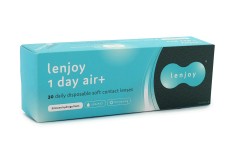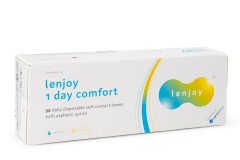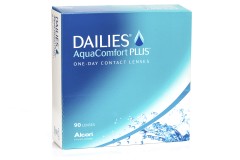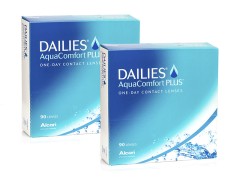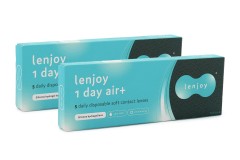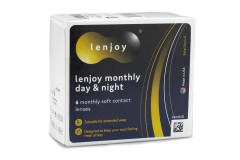Are contact lenses with high water content better?

Water content. One of the most important considerations when choosing quality contact lenses.
Water enriches contact lenses with oxygen. So the higher the water content, the more oxygen permeable the lenses are. The result is breathable eyes and a comfortable wearing experience.
Now you might say that the more water, the better, but… there is a catch!
How much water do contact lenses contain?
Contact lenses can be divided into three groups according to water content. Each group means a slightly different quality in contact lenses. Do you know which group your contact lenses belong to?
- High water content (up to 75%) – Contrary to popular belief, lenses with a high water content draw out the eye's tears and thus make them more susceptible to drying out. The higher the water content in a contact lens, however, the more oxygen reaches the cornea. In addition, contact lenses with a high water content are considered to be easier to handle when inserting, removing, cleaning and disinfecting.
- Mid water content (up to 60%) – Hydrogel contact lenses with a medium water content are suitable for most lens wearers. They allow oxygen to flow to the cornea without absorbing the water of the natural tear film.
- Low water content (up to 40%) – Soft contact lenses with a low water content level of about 38% feel comfortable and let your eyes breathe without drying them out.
Tip: If you're not sure about the water content of your contacts, check the packaging. You'll also find the constituents that make up the rest of the lens such as the surface.
What are the pros and cons of contact lenses with high water content?
As described above, contacts with high water content tend to have a high oxygen permeability. Therefore, they provide excellent comfort for those who generally have moist and insensitive eyes.
However, high water content does not always lead to higher oxygen permeability. Only silicone hydrogel contact lenses can guarantee true oxygen permeability, even though silicone is water repellent.
Consequently, silicone hydrogel has a lower water content but many times the oxygen transmissibility (Dk) of conventional hydrogel materials.
If you suffer from dry eyes, soft contact lenses with a high water content may be problematic for you, as they absorb the eye's natural tear film. Lentiamo therefore advises you to wear silicone hydrogel lenses, which combine the advantages of contacts with a lower water content and superior oxygen permeability.
Water and oxygen permeability in hydrogel and silicone hydrogel lenses

Most contact lenses are made of a soft plastic called hydrogel. Hydrogels soak up a large amount of water to keep the lens soft. The absorption capacity of hydrogel material is also called 'water content'
For people with more sensitive eyes, silicone hydrogel contact lenses are a better option because they transmit more oxygen than hydrogel lenses. In addition, their material absorbs water and thus helps hydrate your eyes, so they don't dry out. This is possible due to the surface treatment of the lens in combination with wetting agents embedded in the lens membrane and not from wetting agents in the contact lens blister pack.
Water and oxygen permeabiltiy in most popular contact lens brands

The eyes and preferences of every contact lens wearer are different. For one person, a high water content may provide long-lasting comfort without drying out; for another, low water content contact lenses are the better choice as these lenses do not extract water from the eyes.
If you are curious to know which contact lenses from which brands have the right oxygen permeability AND water content for you, take a look at our graph and shop for your favourite contact lenses at Lentiamo!
Sources:





